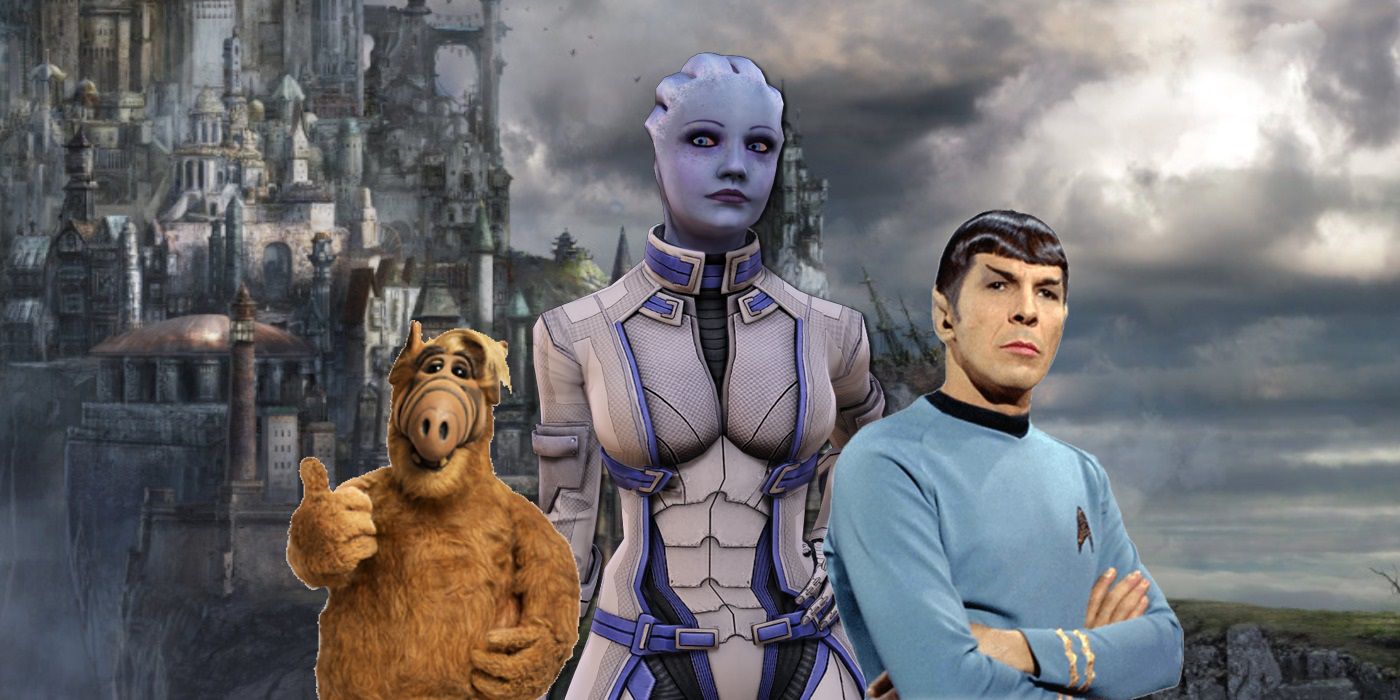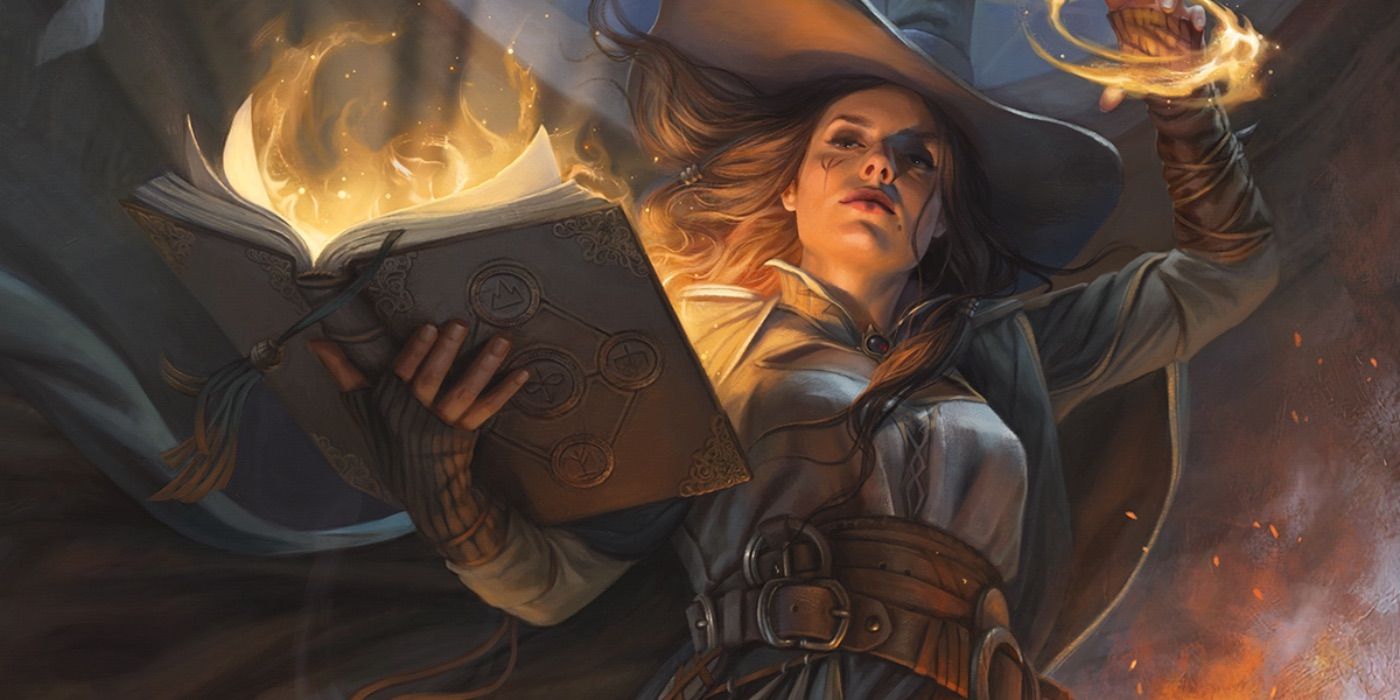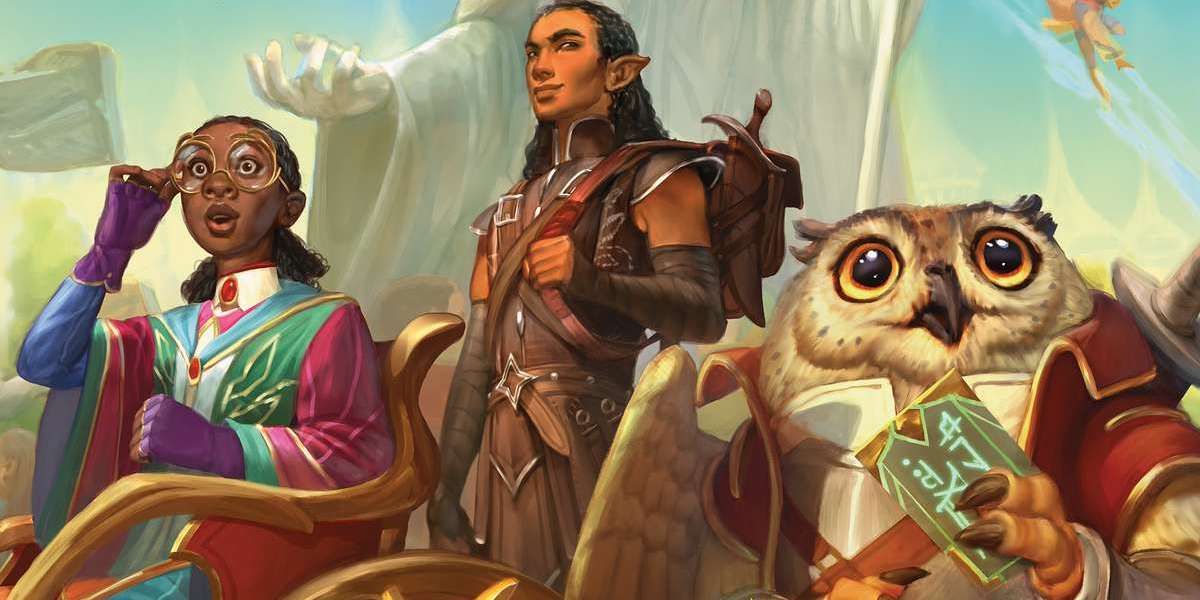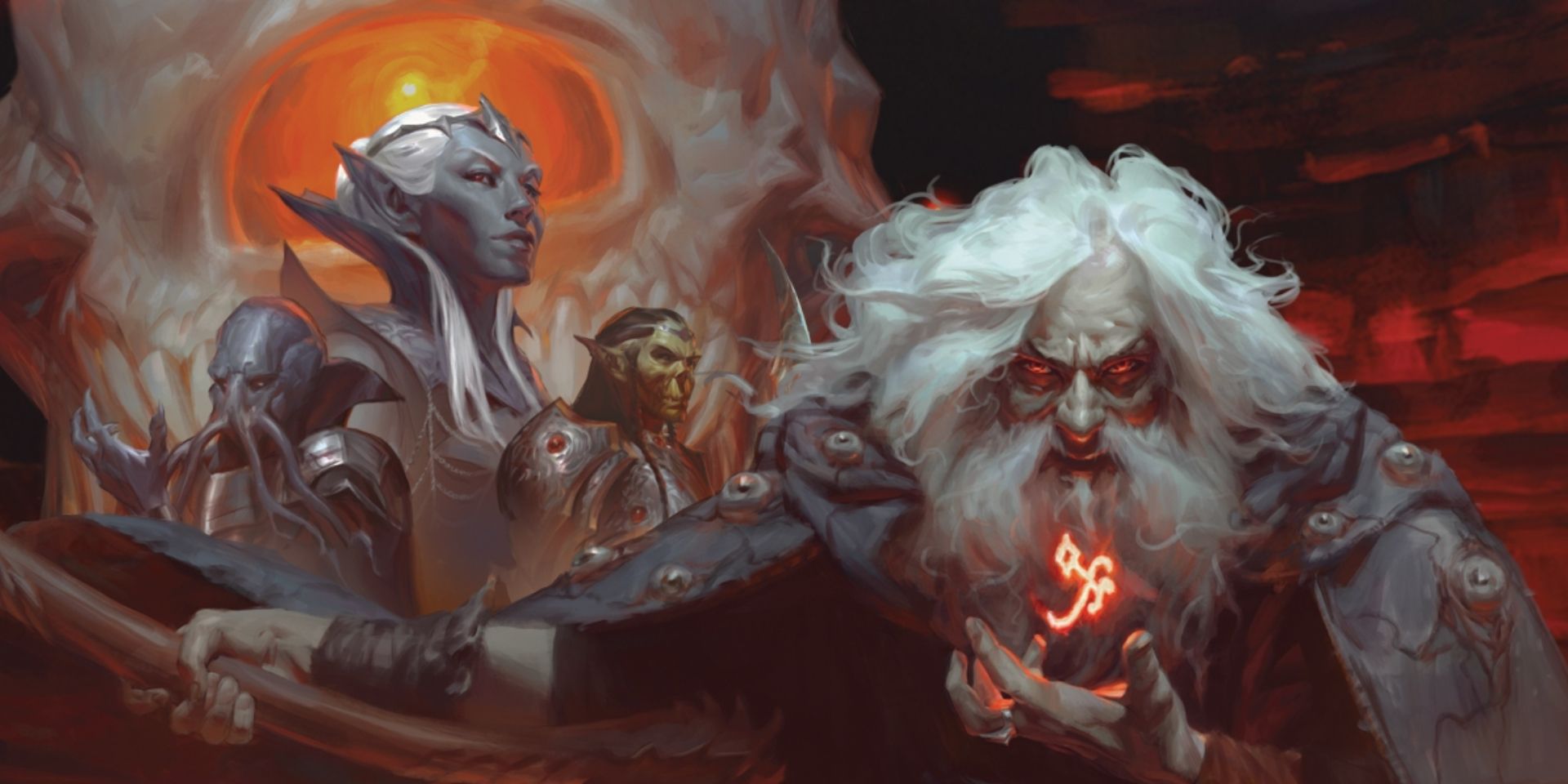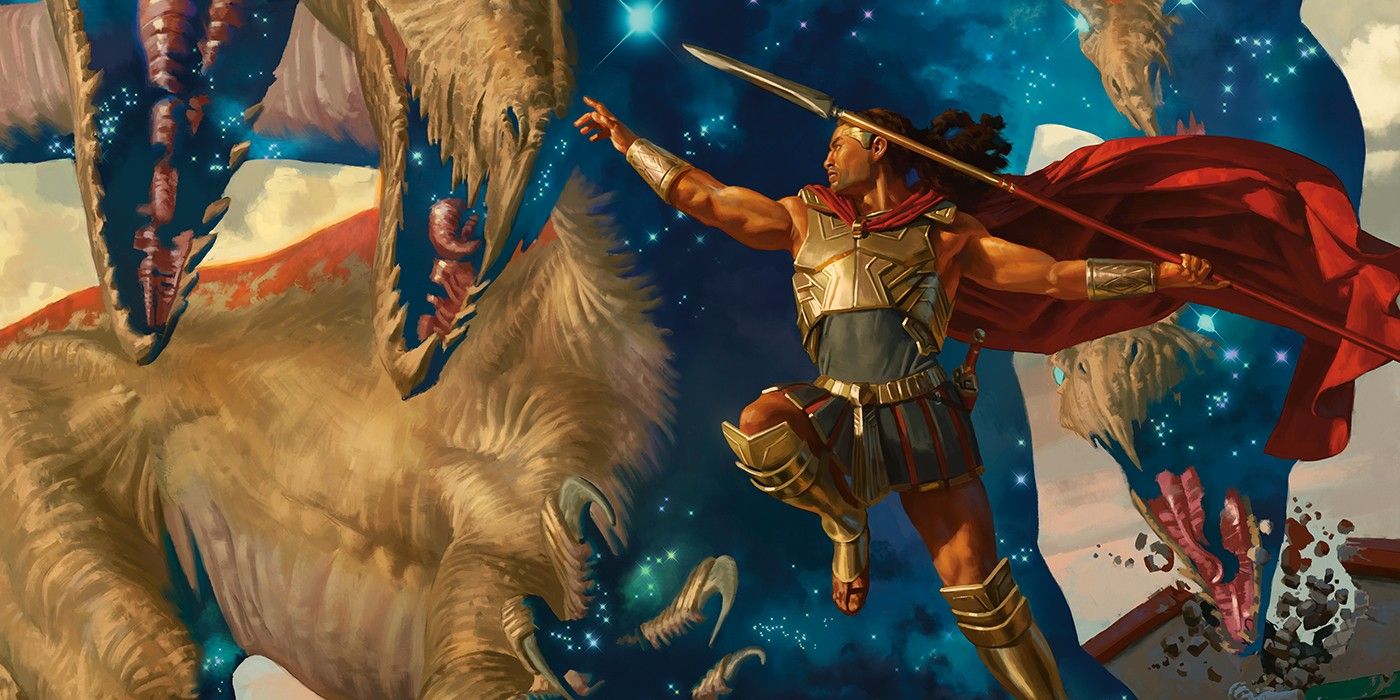Dungeons & Dragons is a game that fits squarely within the fantasy genre, but there's no reason why groups can't introduce science fiction elements into their games. The D&D campaign worlds are mostly based on Medieval European, with elements taken from Conan the Barbarian, The Lord of the Rings, and too many other fantasy series to count. There are some science fiction concepts within the game, including a race of aliens stolen from George R.R. Martin, but they are easy to mistake for fantasy elements.
D&D introduced science fiction elements as far back as 1980, as the adventure called Expedition to the Barrier Peaks involved players discovering an alien spaceship that crashed in the Greyhawk setting. The players quickly discovered that the ship was prepared for any unwanted visitors, as they had to deal with vicious alien lifeforms and robots. The third edition Dungeon Master's Guide included rules for futuristic weaponry as optional items, and the D20 system as a whole was a great way to introduce science fiction concepts into D&D.
It's looking likely that D&D will be going to the stars again in the future, as the Spelljammer campaign is probably coming back within the next two years. The players and DMs who are looking to shake up their game should consider running a campaign where all of the player characters are actually aliens, who are stuck on a D&D 5e campaign world and have to use their knowledge to escape, without revealing their true identity of the locals.
Use The Tasha's Cauldron Of Everything Race Rules To Make New D&D Playable Races
There's nothing stopping the players from using humans or a race that is similar to them for their character, but using aliens gives players the chance to get creative. Tasha's Cauldron of Everything has rules for Custom Lineages, which gives the player the framework to create their own race whole cloth, including its culture and history. The DM could let them trade their Feat for an ability from one of the other races in D&D, such as the hopping power of the harengon from The Wild Beyond the Witchlight, or the deathless nature of the reborn from Van Richten's Guide to Ravenloft. The warforged from Eberron could easily be remade into an android-like species, allowing for a robot party member.
The supplementary D&D books are filled with all kinds of weird and wonderful races, and the DM should consider an edict where the players cannot pick anything from the Player's Handbook, in order to make the crew seem unique. These strange races include the fairy and the harengon from The Wild Beyond the Witchlight, all of the multidimensional races from the recent Unearthed Arcana article, the goliath from Volo's Guide to Monsters, and the Leonin from Mythic Odysseys of Theros. There are tons of options for bizarre characters in D&D and an alien campaign is a perfect place to use them. The fact that the D&D campaign worlds have so many strange races means that they shouldn't have any trouble fitting in.
Restricting D&D Alien Classes Based On Character Experience
Coming up with new alien races to use in the campaign is easy. The hard part is giving them character classes that fit their origins. The Barbarian, Fighter, and Monk are easy, as an alien crew would have security officers that are trained in combat skills and the use of weapons. The Barbarian would be an especially good fit for a Klingon or Krogan-inspired species. The Ranger and Rogue could be for crew members who are trained in field exploration and have knowledge of how to survive in harsh and unknown environments, who would normally go on away missions.
Where things get harder is with the spellcasters. Bards, Clerics, Druids, and Wizards usually spend years in training and it might be hard to work that into the story. One workaround can be to explain that the magic used by the party members is actually psionic abilities, and they belong to a race of aliens with telepathic and telekinetic capabilities. The Aberrant Mind Sorcerer from Tasha's Cauldron of Everything is a great fit for this concept. There are also other psionic classes in D&D that could be explained away by the natural abilities of the alien characters.
A Druid could be a character who belongs to a race with a connection to plant life, similar to Poison Ivy or Swamp Thing, while Clerics could just be doctors with access to healing tech, but it was damaged, and only has a limited number of uses before it needs to recharge. Overall, the combat and exploration-style classes are fairly easy to explain, while the magical classes need a bit of work. This could also tie into the characters hiding their alien nature, as they have to pretend their psychic/tech-based skills are magical.
The Campaign Involves A Crash Landing & Finding The Items Needed To Fix The Ship
Now that the player characters have been created, it's time to work out how they arrive on a D&D campaign world. The best way is for them all to be part of the same crew on a spaceship, perhaps all being members of a Federation-style civilization from Star Trek. The adventure starts with their ship crashing in the wilderness and them lacking the parts needed to fix it. The scanners on their ship are able to detect a material that can be used to repair the engines, which is either an extremely rare kind of metal or a magic item that produces the type of energy they need. Armed with only a few makeshift weapons and some universal translators, they venture out into the world in search of the item they need to help them go home.
The D&D campaign will be made more interesting if the party has to adhere to a Prime Directive-style rule, where they aren't allowed to interfere with the culture of the planet they have landed on. This means they have to keep their alien nature a secret, as well as all of the advanced knowledge they possess. That's a lot easier said than done, as they become embroiled in the conflicts that plague the locals, and grow closer to the NPCs they encounter along the way.
Use An Unfamiliar Or Homebrew D&D Campaign To Keep Players On Their Toes
The reason a lot of D&D groups use campaign settings like the Forgotten Realms and Greyhawk is that they're easy to tell stories in. These settings do have their own lore, but it's easy to ignore. It's also easy to explain the basics of these settings to a brand new player, without bogging them down with lots of unnecessary information. An alien campaign is a perfect chance to bring out a brand new campaign setting that the players haven't experienced before, as they cannot rely on their knowledge about the world.
A setting like Eberron or Theros would be a great choice, as they have elements that will be both familiar and unfamiliar to players. This is also the perfect opportunity to bring out a D&D homebrew world, as the players won't have the chance to research the setting on the sly. Part of the fun of an alien campaign in Dungeons & Dragons is the characters hiding their true nature while pretending to be familiar with the world, and throwing them into an unfamiliar campaign setting is the best way to do this.

